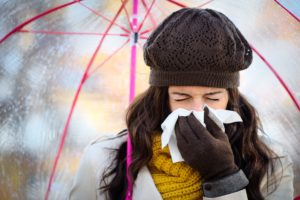Interventional Care


We notice that you are visiting us from . This site only services US-based visitors. Would you like to visit the site that is appropriate for your location?

The summer season is nearing its end once again with the start of school, football and fall festivals. And with back to school we bring back the germs!
There are a few things we can all do to help reduce the potential fall and winter time germy blues.This prevention trifecta includes:

Vaccinations
There are still cases and outbreaks of vaccine preventable diseases that occur routinely in the United States. Some examples of these diseases include measles, pertussis and mumps.
According to the Centers for Disease Control and Prevention (CDC), the best way to protect your community and schools from outbreaks is to keep your children up-to-date with vaccinations.1
Hygiene basics: Hand hygiene and Respiratory Etiquette
Hand hygiene and respiratory etiquette are highly effective and simple measures that help reduce the spread of infectious diseases. A recent literature review showed that hand hygiene interventions in elementary schools helped with reducing some absenteeism in students³. The literature review found that hand hygiene interventions such as education, and prompting hand hygiene with soap and water or alcohol based hand sanitizers, helped reduce gastrointestinal (GI) illness and other non-specific illnesses related absenteeism. However, the interesting point of the review was that hand hygiene interventions alone were not as effective on respiratory illness-associated absenteeism.³ Most GI illness is transmitted from hands (fecal-oral), which is one rationale for why hand hygiene interventions help reduce these illnesses. However, respiratory illnesses, can also be transmitted via the droplet or airborne route. This is why respiratory hygiene is so important. Using an elbow or a tissue to cover coughs and sneezes are helpful in reducing the aerosolization of common respiratory germs. Performing hand hygiene after coughing, sneezing or blowing one’s nose is also a critical step in respiratory hygiene.
Environmental cleaning
To stop or reduce the spread of common fall and winter germs, the CDC recommends routine environmental cleaning and disinfection. Specifically, to disinfect frequently touched surfaces and objects such as toys and doorknobs. This is part of a broader approach in preventing infectious diseases in schools.⁴ In an outbreak scenario, the CDC also offers disease specific environmental cleaning and disinfection recommendations.
Ambulatory settings, such as physician offices and clinics, will see an influx of school-aged children due to physicals and vaccinations required for the start of school. This surge of patients may continue due to the increase in fall and winter illnesses such as norovirus (common gastrointestinal illness) and influenza. It is important that these ambulatory and outpatient settings adhere to cleaning and disinfection guidelines.
Toys in these settings are examples of items that can be vehicles for the transmission of germs. Toys have specific cleaning and disinfection recommendations from the CDC and other regulatory bodies.
The CDC specifically states the following regarding toys:b “In facilities that provide health care to pediatric patients or have waiting areas with child play toys (e.g., obstetric/gynecology offices and clinics), establish policies and procedures for cleaning and disinfecting toys at regular intervals. (Category IB). Use the following principles in developing this policy and procedures (Category II):
Recap:
It is important to stay current on vaccinations; to be diligent with hand hygiene and respiratory etiquette; and to always practice good environmental cleaning. Following these simple strategies can help reduce the germ blues and keep everyone healthy!
¹Centers for Disease Control and Prevention (CDC). School Starts Soon—Is Your Child Fully Vaccinated? August, 2017. Available from: https://www.cdc.gov/features/catchupimmunizations/index.html. Accessed August 24, 2017.
²Centers for Disease Control and Prevention. Mumps. Updated August, 2017. Available from: https://www.cdc.gov/mumps/outbreaks.html. Accessed August 24, 2017.
³Wang, et al. 2017. The effect of hand-hygiene interventions on infectious disease-associated absenteeism in elementary schools: A systematic literature review. Association for Professionals in Infection Control and Epidemiology, Inc. Published by Elsevier Inc. All rights reserved. http://dx.doi.org/10.1016/j.ajic.2017.01.018
⁴ Centers for Disease Control and Prevention (CDC). How To Clean and Disinfect Schools To Help Slow the Spread of Flu. October, 2016. Available from: https://www.cdc.gov/flu/school/cleaning.htm. Accessed August 27, 2017.
⁵ Siegel JD, Rhinehart E, Jackson M, Chiarello L, and the Healthcare Infection Control Practices Advisory Committee, 2007 Guideline for Isolation Precautions: Preventing Transmission of Infectious Agents in Healthcare Settings. Available from: https://www.cdc.gov/infectioncontrol/guidelines/isolation/. Accessed August 27, 2017.